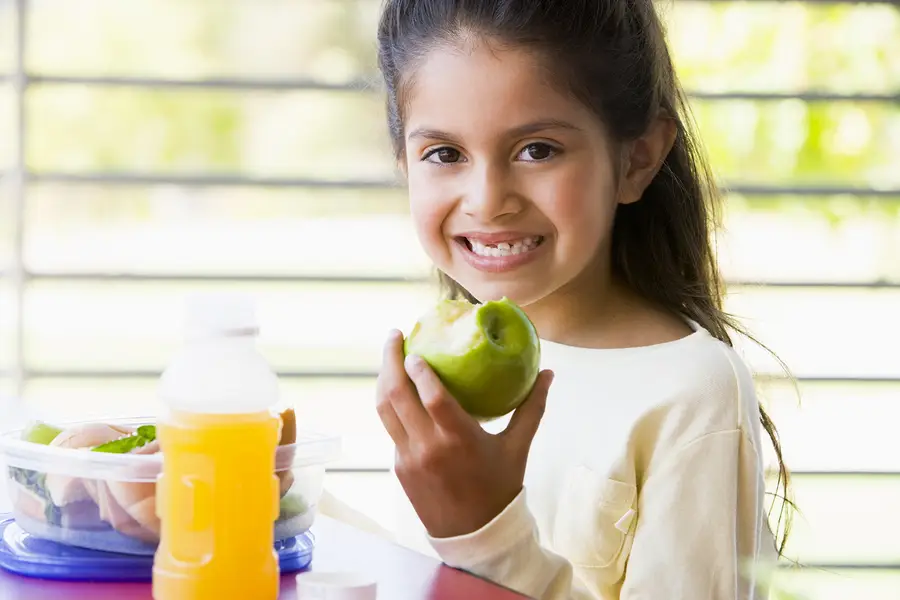
In early March 2020, governors in nearly all states and D.C. ordered or recommended school closures in the face of the COVID-19 pandemic, interrupting not only education but also a keystone program that provides nutritious meals to 29.6 million school-age children daily. Of those participating children, 21.8 million receive free or reduced-price lunch, and 12.5 million receive free or reduced-price breakfast. Suddenly, low-income families whose children received both free or reduced-price breakfast and lunch were responsible for providing 10 additional meals to their children each week due to COVID.
Within days of initial school closures and stay-at-home orders, USDA’s Food and Nutrition Service (FNS) responded to the potential impact this could have on low-income families by making child nutrition assistance programs more accessible and flexible. On March 9, USDA began issuing waivers to give organizations running child nutrition programs the flexibility to implement these programs using typically unallowable means in an effort to reach low-income children. For example, USDA announced nationwide child nutrition program waivers on mealtimes, afterschool snacks and meals, meal pattern requirements, parent/guardian meal pickups, reporting, and more.
With the passage of the Families First Coronavirus Response Act of 2020 on March 18, USDA was given the authority to approve state agency plans for Pandemic-Electronic Benefit Transfer (P-EBT)—a completely new food assistance program. Under this program, families with children who were eligible to receive free or reduced-price meals at school for the 2019–2020 school year could receive a debit card with the value of the free school breakfast and lunch rates (typically $5.70 per day for children receiving both meals) for the number of weekdays that schools were closed due to COVID-19.
Participation in P-EBT operates on a state-by-state basis allowing each state the flexibility to run the program in the best way to meet its needs. The agency within each state that administers the Supplemental Nutrition Assistance Program (SNAP) is responsible for applying for P-EBT. The application must address how the state will obtain enrollment data to determine which children are eligible to receive P-EBT benefits, how the state will match children to their existing SNAP caseload, how they will issue P-EBT benefits to existing SNAP households, and how they will issue EBT cards and benefits to non-SNAP households. With 49 states, D.C., and the Virgin Islands approved to administer P-EBT, we are seeing states take different implementation approaches. This allows for the possibility to assess best practices.
Disaster-SNAP as a Precedent for USDA’s Response
With child nutrition program waivers and the creation of P-EBT, USDA has clearly recognized the importance of helping families struggling to avoid food insecurity during the current pandemic. This is not the first time it has stepped up to assist during a crisis. In the wake of natural disasters, USDA has enacted the Disaster Supplemental Nutrition Assistance Program (D-SNAP) to provide food assistance to low-income households most affected by a disaster or emergency. In 2018, USDA responded to 28 natural disasters in 19 states and territories such as Hurricane Florence in North and South Carolina, wildfires in California, and the Kilauea East Rift Zone Volcanic Eruption in Hawaii. Through D-SNAP, USDA provided over $1.4 billion in D-SNAP and SNAP supplements, $18.6 million in USDA foods, and $4.9 million in infant formula/foods to eligible households affected by the 2018 disasters. P-EBT is anticipated to issue approximately $9.7 billion in benefits for the 2019–2020 school year.
Because of the similarity with the current pandemic situation, USDA guidance for P-EBT recommends that states issue benefits “in a manner similar to providing automatic supplements under D-SNAP operations.” To operate D-SNAP, states must submit a request and implementation plan to USDA for approval similar to the process for P-EBT. Unlike P-EBT, D-SNAP extends eligibility to households that would not ordinarily be eligible for food assistance, although families must apply for benefits. Additionally, during natural disasters, USDA works with the state child nutrition agency to temporarily waive child nutrition program requirements, similar to what has been done at the national level for COVID-19.
Assessing Successes and Failures in State-Level P-EBT Rollout
As with D-SNAP plans, P-EBT implementation plans vary. States allocated resources differently (e.g., management, staff, financial resources) and conducted different activities (e.g., development of protocols, training strategies, communication with stakeholders/participants) to execute P-EBT. Not surprisingly, states have faced different challenges. In Maryland, the State Department of Education collected student enrollment data from each of the school districts to determine eligibility, but the data did not include all the necessary information and had to be recollected. In North Carolina, some P-EBT cards were sent to the child’s emergency contact rather than the parent or guardian. In Texas, EBT cards were sent in plain white envelopes that some families discarded without opening. Non-SNAP families have been difficult to reach in some states as are youth in foster care and students experiencing homelessness. A New York Times analysis found that as of mid-May, only 15 percent of eligible children had received P-EBT benefits, suggesting that additional strategies may be necessary to reach the program’s intended population.
This situation leads to several questions: Have some states implemented P-EBT more effectively? If so, what are these states doing differently? Can their strategies be adapted in other states? What lessons can we learn from the rollout of P-EBT? Because states have been given flexibility with the implementation of this program and success has varied across states, this is a prime opportunity to uncover the characteristics of a successful rollout of P-EBT and under what circumstances.
COVID-19 is an unprecedented crisis, and USDA rolled out the P-EBT program with unprecedented speed and minimal guidance for states. The speed of rollout alone suggests a need for reflection and evaluation, especially because USDA did not have a chance to pilot the program. USDA should be commended for acting quickly in response to the crisis, but states are encountering implementation challenges that need to be addressed. We encourage gathering information from each state and examining outcomes such as program reach and length of time to receive benefits, which will provide insights to improve performance among states that underperformed in the face of future crises. Learnings from P-EBT may also be relevant to improving the implementation of summer feeding or other stop-gap nutrition assistance programs.


